
Deutsch-Chinesische Enzyklopädie, 德汉百科
 League of Legends
League of Legends
 Beijing Shi-BJ
Beijing Shi-BJ
 China
China
 Chinese Super League 2019
Chinese Super League 2019

 Financial
Financial
 ***Global Financial Center
***Global Financial Center

 History
History
 N 2000 - 2100 AD
N 2000 - 2100 AD

 History
History
 L 1000 - 1500 AD
L 1000 - 1500 AD

 History
History
 M 1500 - 2000 AD
M 1500 - 2000 AD

 International cities
International cities
 ***Global Urban Economic Competitiveness
***Global Urban Economic Competitiveness
 ITU World Championship Series
ITU World Championship Series
 Beijing-Hangzhou Grand Canal
Beijing-Hangzhou Grand Canal
 League of Legends
League of Legends
 League of Legends World Championship
League of Legends World Championship
 Olympic Summer Games
Olympic Summer Games
 2022 Winter Olympics
2022 Winter Olympics
 Silk road
Silk road
 Shanghai Cooperation Organization
Shanghai Cooperation Organization

 Sport
Sport
 Triathlon
Triathlon

 World Heritage
World Heritage
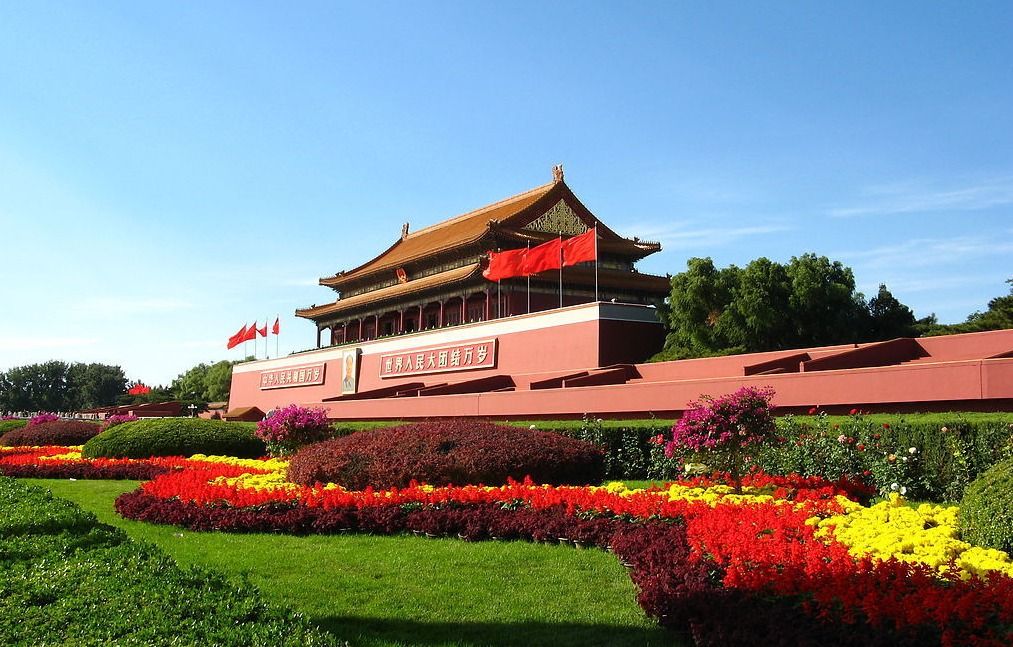
北京,简称“京”,是中华人民共和国的首都、直辖市、国家中心城市、超大城市、国际大都市,全国政治中心、文化中心、国际交往中心、科技创新中心,是中国共产党中央委员会、中华人民共和国中央人民政府、全国人民代表大会、中国人民政治协商会议全国委员会、中华人民共和国中央军事委员会所在地,也是中部战区司令部驻地。
北京位于华北平原北部,背靠燕山,毗邻天津市和河北省。北京的气候为典型的北温带半湿润大陆性季风气候。
北京是首批国家历史文化名城和世界上拥有世界文化遗产数最多的城市,三千多年的历史孕育了故宫、天坛、八达岭长城、颐和园等众多名胜古迹。早在七十万年前,北京周口店地区就出现了原始人群部落“北京人”。公元前1045年,北京成为蓟、燕等诸侯国的都城。公元938年以来,北京先后成为辽陪都、金中都、元大都、明、清国都。1949年10月1日成为中华人民共和国首都。
北京被全球权威机构GaWC评为世界一线城市 。联合国报告指出,北京人类发展指数居中国城市第二位 。2017年,北京人均可支配收入达到57230元,社会消费品零售总额11575.4亿元 。北京住户存款总额和人均住户存款均居全国第一 。2017年,北京高新技术企业达到20183家。 福布斯2017年“中国大陆最佳商业城市排行榜”排第3位。
2015年7月31日,国际奥委会主席巴赫宣布北京携手张家口获得2022年冬季奥林匹克运动会的举办权。北京由此成为全球首个既举办过夏季奥运会又将举办冬季奥运会的城市。
北京是一座有着三千多年历史的古都,在不同的朝代有着不同的称谓,大致算起来有二十多个别称。
燕都,据史书记载,公元前1122年,周武王灭商以后,在燕封召公。燕都因古时为燕国都城而得名。战国七雄中有燕国,据说是因临近燕山而得国名,其国都称为“燕都”。
幽州,远古时代的九州之一。幽州之名,最早见于《尚书·舜典》:“燕曰幽州。”两汉、魏、晋、唐代都曾设置过幽州,所治均在今天的北京一带。
京城,京城泛指国都,北京成为国都后,也多将其称为京城。
南京,辽太宗会同元年(938年),将原来的幽州升为幽都府,建号南京,又称燕京,作为辽的陪都。当时辽的首都在上京。
大都,元代以金的离宫今北海公园为中心重建新城,元世祖至元九年(1272年)改称大都,俗称元大都。
北平,明代洪武元年(1368年),朱元璋灭掉元朝后,为了记载平定北方的功绩,将元大都改称北平。
北京,明永乐元年(1403年),明成祖朱棣永乐皇帝取得皇位后,将他做燕王时的封地北平府改为顺天府,建北京城,并准备迁都城于此,这是正式命名为北京的开始,至今已有600余年的历史。
京师,明成祖于永乐十八年(1420年)迁都北京,改称京师,直至清代。
京兆,民国二年(1913年)废顺天府,翌年置京兆地方,直隶中央,其范围包括今天的北京大部分地区,民国十七年(1928年)废京兆地方,改北京为北平。
Peking (chinesisch 北京, Pinyin Běijīng, W.-G. Pei-ching auch Beijing,  [pei˨˩tɕiŋ˥˥], deutsch historisch Pekingen[2]) ist die Hauptstadt der Volksrepublik China. Der Name bedeutet Nördliche Hauptstadt (vgl. Nanjing für Südliche Hauptstadt). Peking hat eine über dreitausendjährige Geschichte und ist heute eine regierungsunmittelbare Stadt, das heißt, sie ist direkt der Zentralregierung unterstellt und damit Provinzen, autonomen Gebieten und Sonderverwaltungszonen gleichgestellt.
[pei˨˩tɕiŋ˥˥], deutsch historisch Pekingen[2]) ist die Hauptstadt der Volksrepublik China. Der Name bedeutet Nördliche Hauptstadt (vgl. Nanjing für Südliche Hauptstadt). Peking hat eine über dreitausendjährige Geschichte und ist heute eine regierungsunmittelbare Stadt, das heißt, sie ist direkt der Zentralregierung unterstellt und damit Provinzen, autonomen Gebieten und Sonderverwaltungszonen gleichgestellt.
Das gesamte 16.807 Quadratkilometer große (etwas größer als Schleswig-Holstein) Verwaltungsgebiet Pekings hat 21,5 Millionen Einwohner (Stand: März 2016).[3] Es stellt kein zusammenhängendes Stadtgebiet dar, mit seiner dominierenden ländlichen Siedlungsstruktur ist es eher mit einer Provinz vergleichbar.[4] Von der Gesamtbevölkerung sind 11,8 Millionen registrierte Bewohner mit ständigem Wohnsitz (戶口 / 户口, hùkǒu) und 7,7 Millionen temporäre Einwohner (流動人口 / 流动人口, liúdòng rénkǒu) mit befristeter Aufenthaltsgenehmigung (暫住證 / 暂住证, zànzhùzhèng).[5] Wird die Kernstadt (hohe Bebauungsdichte und geschlossene Ortsform) als Grundlage genommen, leben in Peking 7,7 Millionen Menschen mit Hauptwohnsitz (2007).[6] Der Ballungsraum (einschließlich Vororte) hat 11,8 Millionen Einwohner (2007).[7] Ab 2017 soll die Metropole Kern einer Megalopolis von 130 Millionen Einwohnern namens Jing-Jin-Ji werden.
Peking stellt als Hauptstadt das politische Zentrum Chinas dar. Aufgrund der langen Geschichte beherbergt Peking ein bedeutendes Kulturerbe. Dies umfasst die traditionellen Wohnviertel mit Hutongs, den Tian’anmen-Platz (chinesisch Platz am Tor des Himmlischen Friedens), die 1987 von der UNESCO zum Weltkulturerbe erklärte Verbotene Stadt, den neuen und alten Sommerpalast und verschiedene Tempel, wie z. B. den Himmelstempel, den Lamatempel und den Konfuziustempel.(2012)
北京市(ペキンし、中国語: 北京市、拼音: Běijīng)は、中華人民共和国の首都である。
行政区画上は直轄市であり、中国の華北の中央に位置する。人口は2152万(2014年)であり、中国では上海に次ぐ第二の都市。世界有数のメガシティであり、極めて高い影響力を有する世界都市でもある。古くは大都・燕京・北平とも呼ばれた。
春秋戦国時代には燕の首都で薊(けい)と称された。周の国都洛陽からは遠く離れ、常に北方の匈奴などの遊牧民族の侵入による被害を受ける辺境であった。秦漢代には北平(ほくへい)と称されるが、満州開発が進み、高句麗など周辺国の勢力が強大となると、戦略上、また交易上の重要な拠点として重視されるようになった。北京市に隣接する河北省涿郡(たくぐん)は三国志の英雄劉備の故郷で知られるとともに隋の煬帝が築いた大運河の北の起点とされている。
唐末五代の騒乱期、内モンゴルから南下してきた遼朝は、後晋に対し軍事支援を行った代償として北京地方を含む燕雲十六州を割譲された。遼はこの都市を副都の一つ南京と定めた。その後金朝が遼を滅ぼし支配権を獲得すると、金は北京に都城を定め中都とした。更にモンゴル帝国(元朝)が金を滅ぼすと大都として元朝の都城となり、カラコルムに代わってモンゴル帝国の中心となった。
朱元璋が元を北方に駆逐し明朝が成立すると、名称は北平に戻され、都城は南京に定められた。しかし、燕王に封じられ北京を拠点とした朱棣(後の永楽帝)は、1402年に建文帝に対し軍事攻撃を行い政権を奪取。皇帝に即位した後北京遷都を実行し地名を北京に改めた。辛亥革命後は中華民国北洋政府は北京を首都と定めたが、南京を首都と定めた蒋介石を中心とする国民政府は、「政府直轄地域」を意味する直隷省を1928年6月15日に河北省へ、北の首都を意味する北京を北平(ほくへい、ベイピンBěipíng)へと、それぞれ改称した。1937年から1945年まで続いた日本軍占領期は北京の名称が用いられ(公式には1940年に改名)、日本の敗戦によって再び北平に改称された。
1949年10月1日の中華人民共和国成立により新中国の首都とされた北京(北平)は再び北京と改称され現在に至っている。しかし、中華人民共和国の存在を承認せず、南京を公式な首都として大陸地区への統治権を主張する中華民国(台湾)では、現在でも公式名称として「北平」の名称が用いられている。
Beijing (/beɪˈdʒɪŋ/;[10] Mandarin: [pèi.tɕíŋ] ( listen)), formerly romanized as Peking,[11] is the capital of the People's Republic of China, the world's third most populous city proper, and most populous capital city. The city, located in northern China, is governed as a municipality under the direct administration of central government with 16 urban, suburban, and rural districts.[12] Beijing Municipality is surrounded by Hebei Province with the exception of neighboring Tianjin Municipality to the southeast; together the three divisions form the Jingjinji metropolitan region and the national capital region of China.[13]
listen)), formerly romanized as Peking,[11] is the capital of the People's Republic of China, the world's third most populous city proper, and most populous capital city. The city, located in northern China, is governed as a municipality under the direct administration of central government with 16 urban, suburban, and rural districts.[12] Beijing Municipality is surrounded by Hebei Province with the exception of neighboring Tianjin Municipality to the southeast; together the three divisions form the Jingjinji metropolitan region and the national capital region of China.[13]
Beijing is an important capital and global power city, and one of the world's leading centers for politics, economy and business, finance, education, culture, innovation and technology, architecture, language, and diplomacy. A megacity, Beijing is the second largest Chinese city by urban population after Shanghai and is the nation's political, cultural, and educational center.[14] It is home to the headquarters of most of China's largest state-owned companies and houses the largest number of Fortune Global 500 companies in the world.[15] It is also a major hub for the national highway, expressway, railway, and high-speed rail networks. The Beijing Capital International Airport has been the second busiest in the world by passenger traffic since 2010,[16] and, as of 2016, the city's subway network is the busiest and second longest in the world.
Combining both modern and traditional architecture, Beijing is one of the oldest cities in the world, with a rich history dating back three millennia. As the last of the Four Great Ancient Capitals of China, Beijing has been the political center of the country for most of the past eight centuries,[17] and was the largest city in the world by population for much of the second millennium A.D.[18] Encyclopædia Britannica notes that "few cities in the world have served for so long as the political headquarters and cultural center of an area as immense as China."[19] With mountains surrounding the inland city on three sides, in addition to the old inner and outer city walls, Beijing was strategically poised and developed to be the residence of the emperor and thus was the perfect location for the imperial capital. The city is renowned for its opulent palaces, temples, parks, gardens, tombs, walls and gates.[20] It has seven UNESCO World Heritage Sites – the Forbidden City, Temple of Heaven, Summer Palace, Ming Tombs, Zhoukoudian, and parts of the Great Wall and the Grand Canal – all popular locations for tourism.[21] Siheyuans, the city's traditional housing style, and hutongs, the narrow alleys between siheyuans, are major tourist attractions and are common in urban Beijing.
Pékin2 (en chinois : 北京 ; pinyin : běijīng ; API : [pe˨˩˦i.tɕi˥ŋ] Écouter la prononciation en mandarin, littéralement « capitale du nord »), également appelée Beijing, est la capitale de la République populaire de Chine. Située dans le nord du pays, la municipalité de Pékin (北京市, abrégé en 北京), d'une superficie de 16 800 km2, borde la province du Hebei ainsi que la municipalité de Tianjin. Pékin est considérée comme le centre politique et culturel de la Chine, tandis que Hong Kong et Shanghai dominent au niveau économique.
D'abord ville périphérique de l'empire chinois sous les Han et les Tang, elle prend de l'importance lorsque les Jurchen, qui fondent la dynastie Jin, la choisissent comme leur capitale principale en 1153. Le prince mongol Kubilai Khan en fait de même sous le nom de Dadu (« grande métropole »), enfin les Ming y transfèrent leur administration en 1421, parachevant le choix de Pékin comme capitale de la Chine. Située à proximité de la Grande Muraille, Pékin abrite des monuments célèbres comme la Cité interdite et le Temple du ciel, qui sont inscrits au patrimoine mondial. De nombreuses réalisations architecturales et structurelles ont modifié la ville à l'occasion des Jeux olympiques d'été dont elle a été l'hôte en 2008. Beijing a été choisie par le CIO pour organiser les Jeux olympiques d'hiver de 2022 et sera la première ville à avoir accueilli les deux éditions de l'évènement sportif international.
Avec 21,15 millions d'habitants en 2013, Pékin est la deuxième ville la plus peuplée de Chine après Shanghai. La zone urbaine compte quant à elle 18 millions d'habitants. Le parler pékinois forme la base du mandarin standard. D'un point de vue économique, Pékin est la troisième ville de Chine par le PIB total derrière Shanghai et Hong Kong. Elle connaît une croissance économique très rapide, nettement plus de 10 % par an dans les années 2000. Un nouveau Central business district (CBD) est en construction.
Pechino (AFI: /peˈkino/[1]; in cinese 北京S, BěijīngP, letteralmente "capitale del nord", pronuncia in mandarino[?·info]) è la capitale della Cina e della municipalità omonima.
L'intera municipalità ha dimensioni pari a poco più della metà del Belgio avendone però quasi il doppio degli abitanti (21.516.000[senza fonte]). Pechino è la seconda città più popolata della Cina dopo Shanghai, la capitale di Stato più popolata al mondo, e la seconda città del mondo per popolazione. Confina esclusivamente con la provincia dell'Hebei e a sud-est con la municipalità di Tientsin.
Pekín, Pequín o Beijing (chino simplificado y tradicional: 北京, pinyin: Běijīng, Wade-Giles: Pei-ching, pronunciado: [pèi.tɕíŋ](![]() escuchar), literalmente «capital del Norte») es uno de los cuatro municipios que, junto con las veintidós provincias, cinco regiones autónomas y dos regiones administrativas especiales, conforman la República Popular China. Además Pekín es la capital del país y una de las ciudades más pobladas del mundo con 21 150 000 personas en 2013.2
escuchar), literalmente «capital del Norte») es uno de los cuatro municipios que, junto con las veintidós provincias, cinco regiones autónomas y dos regiones administrativas especiales, conforman la República Popular China. Además Pekín es la capital del país y una de las ciudades más pobladas del mundo con 21 150 000 personas en 2013.2
Situada en la periferia de la antigua civilización china, Pekín se convirtió en el baluarte de las potencias extranjeras que ocuparon China del Norte entre los siglos X y XII. La dinastía Liao estableció aquí su capital meridional, la más acreditada de las cinco del reino. La dinastía Jin, la siguiente dinastía "bárbara" emprendió un amplio proyecto urbanístico a imagen de la capital de los Song septentrionales, Kaifeng. En 1215 los mongoles arrasaron la ciudad, pero 50 años después Kublai Kan decidió edificar en ella la nueva capital.
En la zona centro-sur del trazado hipodámico se hallaba la colosal villa imperial que contenía el complejo de palacios imperiales. El emperador Yongle, el tercer Ming, decidió trasladar la capitalidad a Pekín. Las murallas del lado septentrional fueron trasladadas más hacia el Sur para que el complejo palaciego imperial, la llamada Ciudad Prohibida, quedase exactamente en el centro del plano. Así la estructura del nuevo Pekín representa la cima del urbanismo tradicional chino, basado en la organización introducida por los mongoles así como en la estructura de los palacios imperiales de Kaifeng y Nankín además de tomar en consideración las normas de la geomancia china (風水).
Pekín es uno de los cuatro municipios de China que poseen un estatus provincial y están bajo el control directo del gobierno central. Pekín ha sido municipalidad desde la creación de la República Popular China. Es una de las ciudades más pobladas de China, tan sólo superada por Shanghái en cuanto a población. Es considerada el corazón cultural, político y social de China.
Пеки́н (кит. 北京, пиньинь: Běijīng, палл.: Бэйцзин, буквально: «Северная столица») — столица и один из городов центрального подчинения Китайской Народной Республики. Пекин с трёх сторон окружён провинцией Хэбэй и граничит с Тяньцзинем на юго-востоке.
Это крупнейший железно- и автодорожный узел и один из основных авиаузлов страны. Кроме того, Пекин является политическим, образовательным и культурным центром КНР, в то время как главными экономическими центрами считаются Шанхай и Гонконг. Вместе с тем, в последнее время всё больше берёт на себя роль локомотива предпринимательской деятельности и основного поля для создания инновационных предприятий.
Входит в число четырёх древних столиц Китая. В 2008 году в городе прошли Летние Олимпийские игры. В 2022 году в городе пройдут Зимние Олимпийские игры.

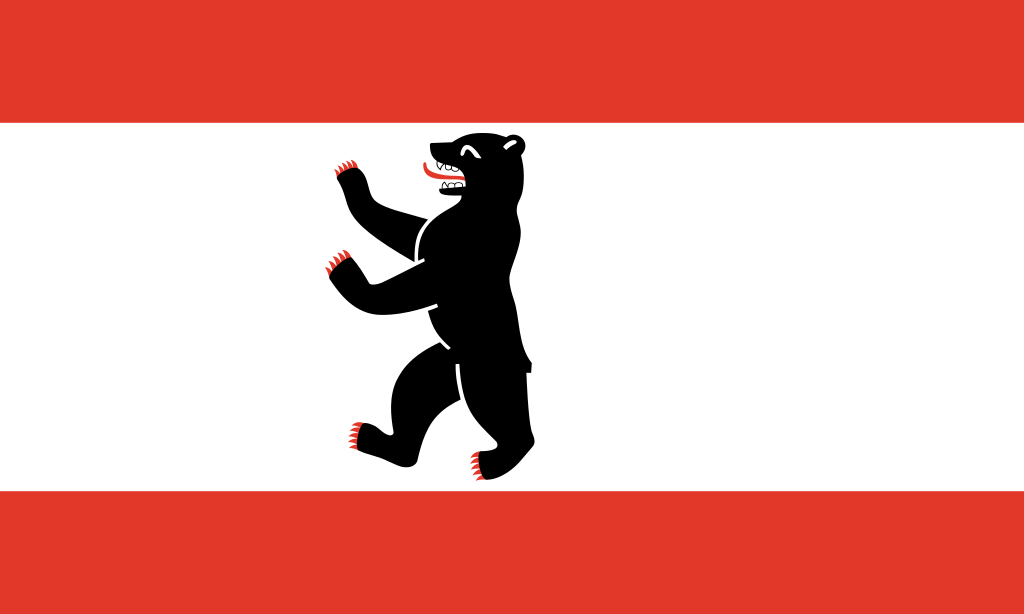 Berlin
Berlin
 Germany
Germany
 FIFA Fussball-Weltmeisterschaft 2006
FIFA Fussball-Weltmeisterschaft 2006

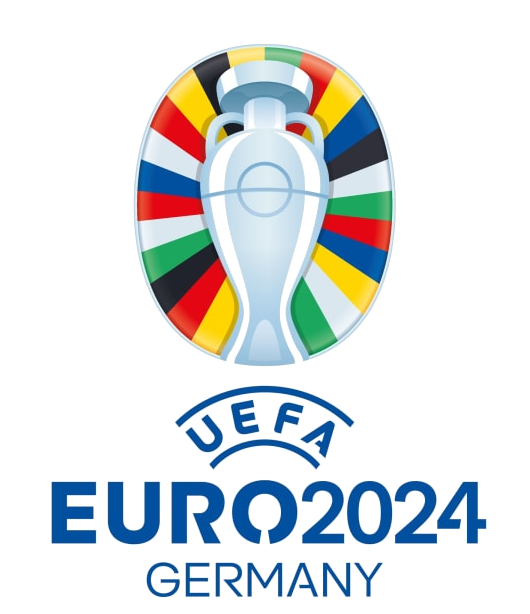 UEFA European Championship 2024
UEFA European Championship 2024
 Women's Soccer World Cup 2011
Women's Soccer World Cup 2011

 Geography
Geography

 Geography
Geography
 *World's Most Livable Cities
*World's Most Livable Cities

 History
History

 International cities
International cities
 *European Capital of Culture
*European Capital of Culture
 League of Legends
League of Legends
 League of Legends World Championship
League of Legends World Championship
 Olympic Summer Games
Olympic Summer Games
 Silk road
Silk road

 Vacation and Travel
Vacation and Travel

 World Heritage
World Heritage
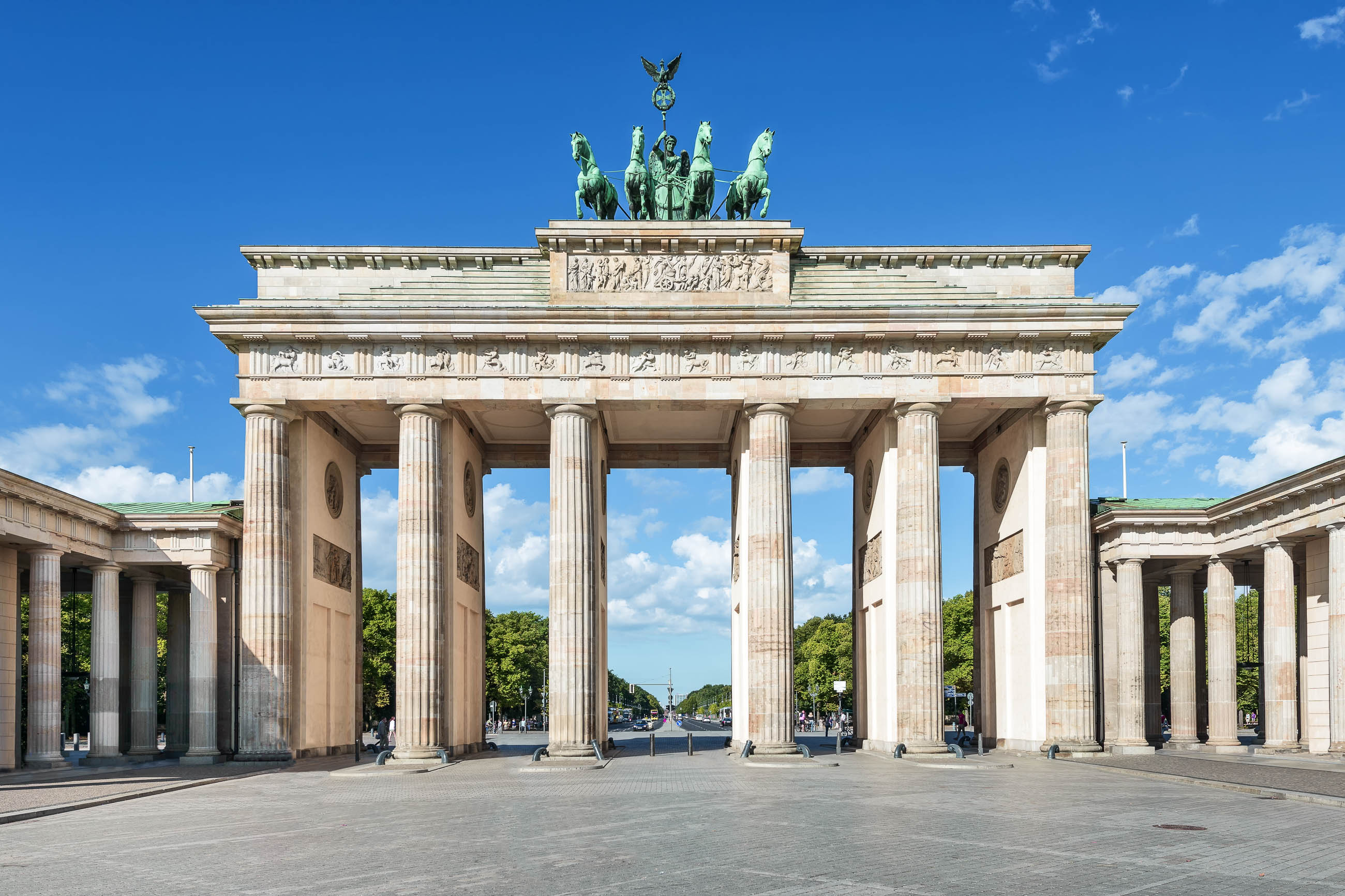
柏林(德语:Berlin,德语发音: [bɛɐ̯ˈliːn] (![]() listen))是德国首都,也是德国最大的城市,现有居民约340万人。柏林位于德国东北部,四面被勃兰登堡州环绕,施普雷河和哈维尔河流经该市。柏林也是德国十六个联邦州之一,和汉堡、不来梅同为德国僅有的三個的城市州。
listen))是德国首都,也是德国最大的城市,现有居民约340万人。柏林位于德国东北部,四面被勃兰登堡州环绕,施普雷河和哈维尔河流经该市。柏林也是德国十六个联邦州之一,和汉堡、不来梅同为德国僅有的三個的城市州。
柏林是欧盟區內人口第2多的城市以及城市面积第8大的城市。它是柏林-勃兰登堡都会区的中心,有来自超过190个国家的5百万人口。地理上位于欧洲平原,受温带季节性气候影响。城市周围三分之一的土地由森林、公园、花园、河流和湖泊组成。
该市第一次有文字记载是在13世纪,柏林连续的成为以下这些国家的首都:普鲁士王国(1701年-1870年)、德意志帝国(1871年-1918年)、魏玛共和国(1919年-1933年)、納粹德國(1933年-1945年)。在1920年代,柏林是世界第3大自治市。第二次世界大战后,城市被分割;东柏林成为了东德的首都,而西柏林事实上成为了西德在东德的一块飛地,被柏林墙围住。直到1990年两德统一,该市重新获得了全德国首都的地位,驻有147个外国大使馆。
柏林无论是从文化、政治、传媒还是科学上讲都称的上是世界级城市。该市经济主要基于服务业,包括多种多样的创造性产业、传媒集团、议会举办地点。柏林扮演了一个欧洲大陆上航空与铁路运输交通枢纽的角色,同时它也是欧盟内游客数量最多的城市之一。主要的产业包括信息技术、制药、生物工程、生物科技、光学电子、交通工程和可再生能源。
柏林都会区有知名大学、研究院、体育赛事、管弦乐队、博物馆和知名人士。城市的历史遗存使该市成为国际电影产品的交流中心。该市在节日活动、建筑的 多样化、夜生活、当代艺术、公共交通网络以及高质量生活方面得到了广泛认可。柏林已经发展成一个全球焦点城市,以崇尚自由生活方式和现代精神的年轻人和艺 术家而闻名。
Berlin ![]() [bɛɐ̯ˈliːn] ist die Bundeshauptstadt der Bundesrepublik Deutschland und zugleich eines ihrer Länder.[12] Die Stadt Berlin ist mit rund 3,6 Millionen Einwohnern die bevölkerungsreichste und mit 892 Quadratkilometern die flächengrößte Gemeinde Deutschlands.[5] Sie bildet das Zentrum der Metropolregion Berlin/Brandenburg (rund 6 Millionen Einwohner) und der Agglomeration Berlin (rund 4,5 Millionen Einwohner). Der Stadtstaat besteht aus zwölf Bezirken. Neben den Flüssen Spree und Havel befinden sich im Stadtgebiet kleinere Fließgewässer sowie zahlreiche Seen und Wälder.
[bɛɐ̯ˈliːn] ist die Bundeshauptstadt der Bundesrepublik Deutschland und zugleich eines ihrer Länder.[12] Die Stadt Berlin ist mit rund 3,6 Millionen Einwohnern die bevölkerungsreichste und mit 892 Quadratkilometern die flächengrößte Gemeinde Deutschlands.[5] Sie bildet das Zentrum der Metropolregion Berlin/Brandenburg (rund 6 Millionen Einwohner) und der Agglomeration Berlin (rund 4,5 Millionen Einwohner). Der Stadtstaat besteht aus zwölf Bezirken. Neben den Flüssen Spree und Havel befinden sich im Stadtgebiet kleinere Fließgewässer sowie zahlreiche Seen und Wälder.
Urkundlich erstmals im 13. Jahrhundert erwähnt, war Berlin im Verlauf der Geschichte und in verschiedenen Staatsformen Residenz- und Hauptstadt Brandenburgs, Preußens und des Deutschen Reichs. Ab 1949 war der Ostteil der Stadt Hauptstadt der Deutschen Demokratischen Republik. Mit der deutschen Wiedervereinigung im Jahr 1990 wurde Berlin wieder gesamtdeutsche Hauptstadt und in der Folge Sitz der Bundesregierung, des Bundespräsidenten, des Bundestages, des Bundesrates sowie zahlreicher Bundesministerien und Botschaften.
Zu den bedeutenden Wirtschaftszweigen in Berlin gehören unter anderem der Tourismus, die Kreativ- und Kulturwirtschaft, die Biotechnologie und Gesundheitswirtschaft mit Medizintechnik und pharmazeutischer Industrie, die Informations- und Kommunikationstechnologien, die Bau- und Immobilienwirtschaft, der Handel, die Optoelektronik, die Energietechnik sowie die Messe- und Kongresswirtschaft. Die Stadt ist ein europäischer Knotenpunkt des Schienen- und Luftverkehrs. Berlin zählt zu den aufstrebenden, internationalen Zentren für innovative Unternehmensgründer und verzeichnet jährlich hohe Zuwachsraten bei der Zahl der Erwerbstätigen.[13]
Berlin gilt als Weltstadt der Kultur, Politik, Medien und Wissenschaften.[14][15][16][17] Die Universitäten, Forschungseinrichtungen, Sportereignisse und Museen Berlins genießen internationalen Ruf.[18] Die Metropole trägt den UNESCO-Titel Stadt des Designs und ist eines der meistbesuchten Zentren des Kontinents.[19] Berlins Architektur, Festivals, Nachtleben und vielfältige Lebensbedingungen sind weltweit bekannt.[20]
ベルリン(独: Berlin ドイツ語発音: [bɛɐ̯ˈliːn] (![]() 音声ファイル)、伯林)は、ドイツ北東部、ベルリン・ブランデンブルク大都市圏地域の中心に位置する都市である。16ある連邦州のうちの一つで、市域人口は350万人[1]とドイツでは最大の都市で欧州連合の市域人口ではロンドンに次いで2番目に多く、都市的地域の人口は7番目に多い。[3]同国の首都と定められている[4]。
音声ファイル)、伯林)は、ドイツ北東部、ベルリン・ブランデンブルク大都市圏地域の中心に位置する都市である。16ある連邦州のうちの一つで、市域人口は350万人[1]とドイツでは最大の都市で欧州連合の市域人口ではロンドンに次いで2番目に多く、都市的地域の人口は7番目に多い。[3]同国の首都と定められている[4]。
ベルリンが属するベルリン・ブランデンブルク大都市圏地域の人口は590万人に達し[6]、190カ国を超える海外出身者も暮らす[7]。ベルリンはヨーロッパ平原に位置し温帯の季節的な気候の影響を受ける。市域の3分の1は森林、公園、庭園、河川や湖で構成されている[8]。ベルリンが最初に文書に言及されたのは13世紀のことで、それ以後プロイセン王国(1701-1918)やドイツ帝国(1871-1918)、ヴァイマル共和政(1919-1933)、ナチス・ドイツ(1933-1945)の首都であった[9]。1920年には「大ベルリン」の成立により市域が大幅に拡大し、現在とほぼ同じ領域となった。1920年代には世界で3番目に大きな都市であった[10]。第二次世界大戦後、ベルリンは東ドイツの首都である東ベルリンと、西ドイツの事実上の飛び地で周辺をベルリンの壁(1961-1989)で囲まれた西ベルリンに分断された[11]。1990年のドイツ再統一によりベルリンは再び首都としての地位を得て[12]、147の大使館が置かれる[13][14]。ベルリンは文化や政治、メディア、科学の世界都市である[15][16][17]。アメリカのシンクタンクが2017年に発表した総合的な世界都市ランキングにおいて、世界14位の都市と評価された[18]。
経済的にはサービス産業を基盤とし創造産業やメディア産業、コンベンション会場などが包括されている。ベルリンはまた、欧州大陸の航空や鉄道交通の中枢でもあり[19][20] 、代表的な観光地である。重要な産業にはIT、製薬、生物医学技術、生物工学、電子工学、交通工学、再生可能エネルギーが含まれる。 ベルリンは有名な大学や調査機関、管弦楽団、博物館、著名人が本拠としており多くのスポーツイベントも催されている他[21]、都市の光景や歴史的な遺産は国際的な映画製作には人気な場所となっている[22]。ベルリンでは多く祭典や多様な建築、ナイトライフ、現代芸術、公共交通機関の路線網、世界で最も居住に適した都市など様々な分野でも良く知られた都市である[23]。
ドイツ最大の都市であり立法・行政の中心地ではあるが、地方分権の歴史が長いドイツでは、司法の中心地はカールスルーエ、金融と交通の中心地はフランクフルト、産業の中心地はルール地方、ミュンヘン、シュトゥットガルト、ケルンとされ、東京(日本)やソウル(韓国)、パリ(フランス)のような一極集中という状態はない[24]。戦間期には科学技術や文学、哲学、芸術などが発展しヴァイマル文化によりドイツはもっとも進んだ国となった[25][26]。1988年の欧州文化首都に選ばれている[27]。現代の都市ベルリンは発展の一方で、特に東側の人口停滞などから都市構造の変革が進められている[28]。
Berlin (/bɜːrˈlɪn/; German pronunciation: [bɛɐ̯ˈliːn]) is the capital and the largest city of Germany, as well as one of its 16 constituent states. With a steadily growing population of approximately 3.7 million,[4] Berlin is the second most populous city proper in the European Union behind London and the seventh most populous urban area in the European Union.[5] Located in northeastern Germany on the banks of the rivers Spree and Havel, it is the centre of the Berlin-Brandenburg Metropolitan Region, which has roughly 6 million residents.[6][7][8][9] Due to its location in the European Plain, Berlin is influenced by a temperate seasonal climate. Around one-third of the city's area is composed of forests, parks, gardens, rivers, canals and lakes.[10]
First documented in the 13th century and situated at the crossing of two important historic trade routes,[11] Berlin became the capital of the Margraviate of Brandenburg (1417–1701), the Kingdom of Prussia (1701–1918), the German Empire (1871–1918), the Weimar Republic (1919–1933), and the Third Reich (1933–1945).[12] Berlin in the 1920s was the third largest municipality in the world.[13] After World War II and its subsequent occupation by the victorious countries, the city was divided; West Berlin became a de facto West German exclave, surrounded by the Berlin Wall (1961–1989) and East German territory.[14] East Berlin was declared capital of East Germany, while Bonn became the West German capital. Following German reunification in 1990, Berlin once again became the capital of all of Germany.
Berlin is a world city of culture, politics, media and science.[15][16][17][18] Its economy is based on high-tech firms and the service sector, encompassing a diverse range of creative industries, research facilities, media corporations and convention venues.[19][20] Berlin serves as a continental hub for air and rail traffic and has a highly complex public transportation network. The metropolis is a popular tourist destination.[21] Significant industries also include IT, pharmaceuticals, biomedical engineering, clean tech, biotechnology, construction and electronics.
Berlin is home to world-renowned universities, orchestras, museums, and entertainment venues, and is host to many sporting events.[22] Its Zoological Garden is the most visited zoo in Europe and one of the most popular worldwide. With the world's oldest large-scale movie studio complex, Berlin is an increasingly popular location for international film productions.[23] The city is well known for its festivals, diverse architecture, nightlife, contemporary arts and a very high quality of living.[24] Since the 2000s Berlin has seen the emergence of a cosmopolitan entrepreneurial scene.[25]
Berlin (prononcé [bɛʁ.lɛ̃] ; en allemand Berlin [bɛɐ̯.ˈliːn] Écouter) est la capitale1 et la plus grande ville d'Allemagne. Institutionnellement, c’est une ville-État nommée Land de Berlin.
Située dans le nord-est du pays, Berlin compte environ 3,7 millions d'habitants2. Ses habitants s'appellent les Berlinois. Elle est la deuxième ville et la septième agglomération la plus peuplée de l'Union européenne. L'agglomération de Berlin s'étend sur 892 km2 et compte 4,4 millions d'habitants. La région métropolitaine de Berlin-Brandebourg qui cumule les Länder de Berlin et de Brandebourg regroupe au total près de 6 millions d'habitants.
Fondée au XIIIe siècle, Berlin a été successivement capitale de l'électorat du Brandebourg (1247-1701), du royaume de Prusse (1701-1871), de l'Empire allemand (1871-1918), de la République de Weimar (1919-1933) et du Troisième Reich (1933-1945). Après 1945 et jusqu'à la chute du mur de Berlin en 1989, la ville est partagée en quatre secteurs d'occupation. Pendant la Guerre froide, le secteur soviétique de la ville, nommé Berlin-Est, est devenu la capitale de la République démocratique allemande, tandis que Berlin-Ouest était politiquement rattachée à la République fédérale d'Allemagne, devenant ainsi un bastion avancé du « Monde libre » à l'intérieur du Bloc communiste. Après la chute du mur, Berlin redevint, en 1990, la capitale de l'Allemagne alors réunifiée, et les principales institutions fédérales y emménagèrent en 1999.
Berlin est une ville mondiale culturelle et artistique de premier plan. La ville abrite 166 musées, 142 bibliothèques et 60 théâtres. En 2014, Berlin a accueilli 11,87 millions de visiteurs (+4,8 % plus qu'en 2013)3, dont 4,52 millions de visiteurs étrangers (+5,2 %).
Berlino (AFI: /berˈlino/[2]; in tedesco: Berlin, /bɛɐ̪ ˈliːn/, ) è la maggiore città e anche un Bundesland della Germania, quindi una "città-stato". Capitale federale della Repubblica Federale di Germania e sede del suo governo, è uno dei più importanti centri politici, culturali, scientifici, fieristici e mediatici d'Europa e, dopo Londra, il secondo comune più popoloso dell'Unione europea, con 3.531.201 abitanti.
In passato è stata la capitale della Marca di Brandeburgo (1417-1801), del Regno di Prussia (1701-1918), dell'Impero tedesco (1871-1918), della Repubblica di Weimar (1919-1933) e del Terzo Reich (1933-1945).
L'area metropolitana ha una superficie complessiva di 2.851 km² ed una popolazione di 5.103.778 abitanti, mentre la regione metropolitana di Berlino e Brandeburgo ha una superficie di 30.370 km² ed una popolazione[3] di 7.220.12 abitanti.
Berlín (Berlin en alemán (![]() [bɛɐ̯ˈliːn] (?·i))) es la capital de Alemania y uno de los dieciséis estados federados alemanes. Se localiza al noreste de Alemania. Por la ciudad fluyen los ríos Esprea, Havel, Panke, Dahme y Wuhle. Con una población de 3,5 millones de habitantes, Berlín es la ciudad más poblada del país y de Europa Central, así como la primera ciudad en población y la séptima aglomeración urbana entre los países de la Unión Europea (si bien se convertirá en la sexta una vez la salida del Reino Unido de la Unión Europea se haga efectiva).2
[bɛɐ̯ˈliːn] (?·i))) es la capital de Alemania y uno de los dieciséis estados federados alemanes. Se localiza al noreste de Alemania. Por la ciudad fluyen los ríos Esprea, Havel, Panke, Dahme y Wuhle. Con una población de 3,5 millones de habitantes, Berlín es la ciudad más poblada del país y de Europa Central, así como la primera ciudad en población y la séptima aglomeración urbana entre los países de la Unión Europea (si bien se convertirá en la sexta una vez la salida del Reino Unido de la Unión Europea se haga efectiva).2
Fundada en 1237 como Cölln, Berlín fue sucesivamente capital del Reino de Prusia (1701-1918), de la República de Weimar (1919-1933) y del Tercer Reich (1933-1945). Después de la Segunda Guerra Mundial, la ciudad fue dividida; la parte este de la ciudad se convirtió en la capital de la República Democrática Alemana, mientras que la región oeste de la ciudad se convirtió en un enclave de la República Federal de Alemania en el interior de la Alemania Oriental.
Berlín es una ciudad mundial y un centro cultural y artístico de primer nivel. Es una de las ciudades más influyentes en el ámbito político de la Unión Europea y en 2006 fue elegida Ciudad Creativa por la Unesco.3 En 2009 la ciudad recibió el Premio Príncipe de Asturias de la Concordia.
Берли́н (нем. Berlin [bɛɐ̯ˈliːn], произношение ) — столица и крупнейший город Германии, второй по населению (после Лондона) и пятый по площади город Евросоюза.
Является одной из 16 земель в составе ФРГ. Город расположен на берегах рек:
- Шпрее (в связи с чем его называют «Афинами на Шпрее»),
- Хафель в центре федеральной земли Бранденбург (частью последней Берлин не является с 1920 года).
Около 1200 года на месте современного Берлина располагались два торговых поселения — Кёлльн и Берлин. Точная дата получения ими городских прав неизвестна. Городские права Кёльна впервые упоминаются в 1237 году, городские права Берлина — в 1244 году. В 1307 году города объединились и образовали общую городскую управу. В 1400 году население объединённого Берлина составляло 8000 человек. Историческое название «Кёльн» нашло своё отражение в названии берлинского района Нойкёльн.
Берлин был столицей маркграфства/курфюршества Бранденбургского (с 1417 года), Пруссии (после объединения курфюршества Бранденбург с герцогством Пруссия) и после создания Германской империи стал её столицей.
После Второй мировой войны в соответствии с решениями Ялтинской конференции Берлин, хоть и находился на территории советской зоны оккупации Германии, был разделён четырьмя державами-победительницами на оккупационные секторы. Позднее три сектора оккупации союзников были преобразованы в Западный Берлин, получивший статус особого государственного образования, но безусловно тесно связанного с ФРГ. Передвижение между секторами Берлина длительное время оставалось относительно свободным, и в целях предотвращения утечки населения в западные секторы правительством ГДР было принято решение о возведении Берлинской стены, окружившей с 13 августа 1961 года Западный Берлин. Берлинская стена, ставшая одним из главных символов холодной войны, просуществовала до 1989 года. После объединения Германии в 1990 году её столицей стал воссоединённый Берлин. В 1994 году туда переехала из Бонна администрация президента и в 1999 году — бундестаг и ведомство федерального канцлера вместе с федеральными министерствами.
Сегодня Берлин является мировым культурным центром. Это крупный европейский транспортный узел и один из самых посещаемых городов на континенте. Университеты, исследовательские институты и музеи Берлина известны во всём мире. В городе живут и работают художники, дипломаты и иммигранты со всех уголков планеты.


 FIFA Fussball-Weltmeisterschaft 2002
FIFA Fussball-Weltmeisterschaft 2002
 League of Legends
League of Legends
 League of Legends World Championship
League of Legends World Championship
 Republic of Korea
Republic of Korea
 Silk road
Silk road

 Important port
Important port
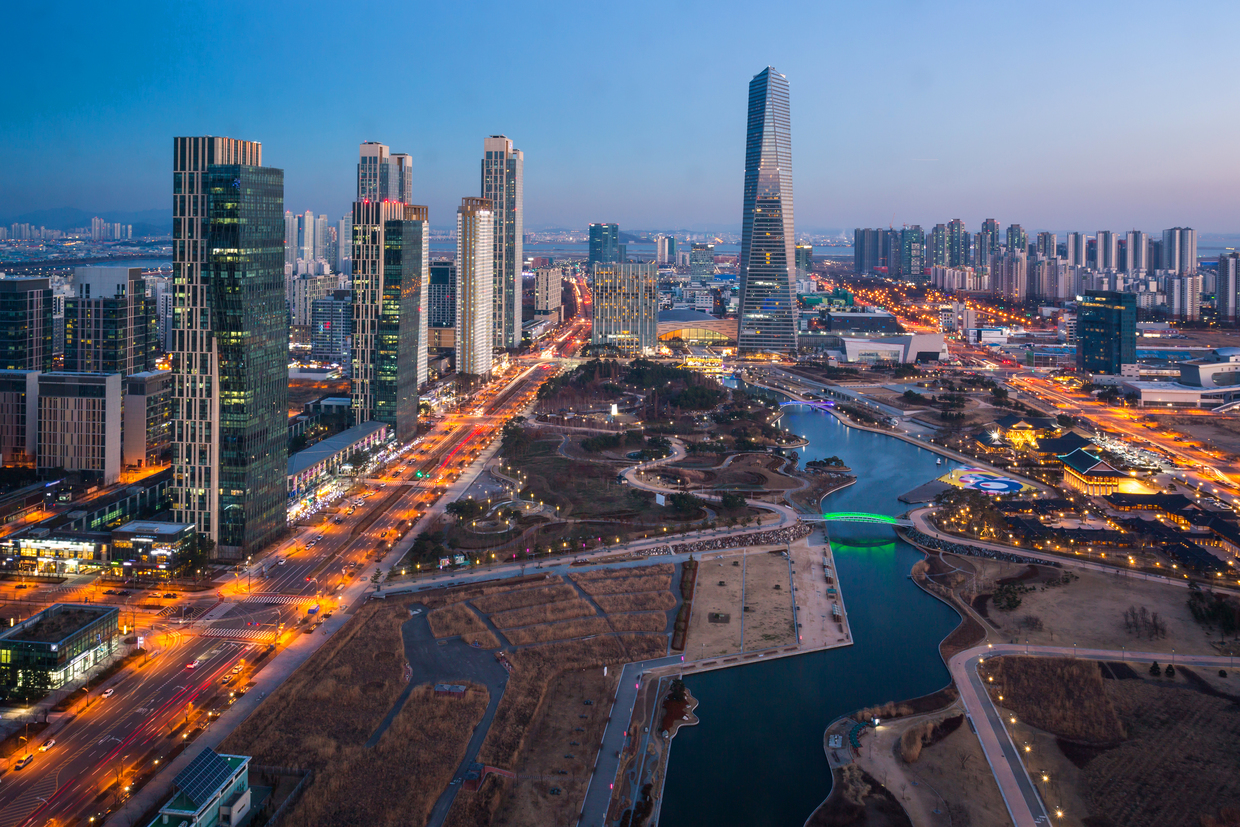

仁川广域市(朝鲜语:인천광역시/仁川廣域市 Incheon gwangyeoksi */?),简称仁川,为大韩民国西北部的一个广域市,是一座面向黄海的港湾都市,人口位居于首尔和釜山之后,为韩国第三大城市。位于首尔西部约40km,为韩国第二大港口城市。仁川与首尔之间有首都圈电铁联系。每日有大量乘客往来仁川与首尔两地,由于此两地距离太过接近,已经共同形成一个大的首都圈。
1883年仁川港开港,成为当时黄海沿岸唯一对外贸易的港口。仁川现已发展为现代化的国际港,仁川港的规模仅次于釜山。在首尔与仁川之间形成了大规模的工业地带。仁川有着良好的工业基础,渔业十分发达、且是一个重要的旅游城市,旅游资源十分丰富。
位于市郊的仁川国际机场,是韩国对外交通的重要门户,2014年举办第十七届亚洲运动会。韩国职棒SK飞龙、K联赛仁川联足球俱乐部的主场也位于此地。仁川唐人街是韩国最大的华侨聚居地。
Incheon, Aussprache: [intɕʰʌn], in amtlicher Bezeichnung „Großstadt Incheon“ (인천광역시, Incheon Gwangyeoksi), ist eine Hafen- und Industriestadt an der Nordwestküste Südkoreas. Sie liegt innerhalb des Gebiets der Provinz Gyeonggi-do, ist aber seit dem 1. Juli 1981 politisch eine eigenständige Einheit. Incheon liegt 28 Kilometer westlich der Hauptstadt Seoul. Mit fast 2,9 Millionen Einwohnern ist die Stadt nach Seoul und Busan die drittgrößte in Südkorea.
Trotz seiner Größe galt Incheon wegen der kurzen Entfernung zu Seoul stets als größte Satellitenstadt der übergroßen Hauptstadt, obwohl die Bewohner von Incheon mit dieser Sichtweise nie vollkommen einverstanden waren. Tatsächlich steht Incheon als „Großstadt“ verwaltungspolitisch einer südkoreanischen Provinz und damit auch Seoul gleich.
Seit der Entwicklung des Begriffs Sudogwon und dessen Erweiterung wird Incheon als Entwicklungsachse der Metropolregion gesehen. Die Errichtung des überdimensionalen Flughafens Incheon als zukünftiges Drehkreuz Ostasiens und der bestehende internationale Hafen setzten zudem eine große internationale Funktion hinzu. Die Planung der neuen Freiwirtschaftszone Incheon Free Economic Zone (IFEZ) bestätigte diese neue Rolle Incheons für die Wirtschaft Südkoreas. Die Freiwirtschaftszone besteht aus den drei Planstädten Songdo City, Yeongjong und Cheongna und erweitert wiederum den wirtschaftlichen Handelsraum der Metropolregion Sudogwon.
Trotz der politischen Eigenständigkeit ist Incheon fast lückenlos mit Seoul zusammengewachsen. Auch die U-Bahn-Netze beider Städte sind inzwischen verbunden.
仁川広域市(インチョンこういきし、韓国語: 인천광역시、英語:Incheon)は、大韓民国西北部の都市。黄海に面した韓国を代表する港湾都市の一つである。仁川国際空港がある。
人口は約300万人で、ソウル、釜山に次いで韓国で3番目である。仁川の繁華街の中では富平、九月洞、月尾島などが有名で、松島国際都市、青羅国際都市など大韓民国1位の経済自由区域である仁川経済自由区域が開発されている。
Incheon (Hangul: 인천; Hanja: 仁川; Korean pronunciation: [intɕʰʌn]; formerly romanized as Inchŏn; literally "kind river"), officially the Incheon Metropolitan City (인천광역시), is a city located in northwestern South Korea, bordering Seoul and Gyeonggi to the east. Inhabited since the Neolithic, Incheon was home to just 4,700 people when it became an international port in 1883. Today, about 3 million people live in the city, making it South Korea's third most-populous city after Seoul and Busan. The city's growth has been assured in modern times with the development of its port due to its natural advantages as a coastal city and its proximity to the South Korean capital. It is part of the Seoul Capital Area, along with Seoul itself and Gyeonggi Province, forming the world's fifth largest metropolitan area by population.
Incheon has since led the economic development of Korea by opening its port to the outside world, ushering in the modernization of Korea as a center of industrialization. In 2003, the city was designated as Korea's first free economic zone. Since then, large local companies and global enterprises have increasingly invested in the Incheon Free Economic Zone, including Samsung which chose Songdo International City as its new investment destination for its bio industry.
As an international city, Incheon has held numerous large scale international conferences, such as the Incheon Global Fair & Festival in 2009. The 17th Asian Games Incheon 2014 was also held in Incheon on 19 September 2014. Incheon has established itself as a major transportation hub in northeast Asia with the Incheon International Airport and Incheon Port. The city is also home to the Green Climate Fund, an international organization addressing environmental issues.
Incheon (인천, 仁川, littéralement « rivière sage »), est une ville portuaire sud-coréenne située à 50 km à l'ouest de la capitale Séoul, sur la mer Jaune. La ville n'abritait que 4 700 personnes lorsque le port de Jemulpo a été construit en 1883. Aujourd'hui, 2,76 millions de personnes vivent dans la ville, ce qui fait d'elle la troisième ville la plus peuplée de Corée après Séoul et Busan. Comme Séoul, la ville constitue une province à elle seule.
Bien que l'endroit soit habité depuis l'âge de la pierre, la croissance de la ville a été assurée dans les temps modernes avec le développement de son port, dû à l'avantage naturel d'être une ville côtière. Incheon a depuis dirigé le développement économique de la Corée par l'ouverture de son port sur le monde extérieur. En 2003, la ville a été désignée comme étant la première zone économique libre de Corée. Depuis, de grandes entreprises, tant locales que mondiales, y ont investi, comme Samsung qui a choisi la nouvelle ville de Songdo pour ses nouveaux investissements concernant son activité dans l'industrie bio.
En tant que ville internationale, Incheon accueille de nombreuses conférences internationales, telles que, en 2009, la Incheon Global Fair & Festival et, en 2014, les 17e jeux asiatiques. Incheon s'est imposée comme une véritable plaque tournante en Asie du Nord-Est avec son aéroport et son port qui draîne un important trafic maritime.
Incheon (인천 광역시?, 仁川廣域市?, Incheon gwang-yeoksiLR), ufficialmente denominata Città metropolitana di Incheon, è una città della Corea del sud.
I primi accampamenti umani risalgono al periodo neolitico. In tempi moderni Incheon è diventata molto importante per la sua posizione, sull'estuario del fiume Han e come porto commerciale. All'epoca della fondazione, nel 1883 fu chiamata Chemulpo (제물포?, 濟物浦?), e aveva solo 4.700 abitanti. Ora Incheon ha quasi tre milioni di abitanti ed è uno dei centri economici del paese assieme all'area Pusan-Jinhae.
La superficie della città metropolitana è di 964,53 km² di cui il 21% è coltivato a risaie e il 44% è coperto da foreste e boschi.
È il porto più importante della costa occidentale coreana e la terza città più grande della Corea, dopo Seul e Pusan, con una popolazione superiore ai due milioni e mezzo di unità alla fine del 2009.
L'agglomerato urbano di Incheon, considerata la sua prossimità con la capitale (e il fatto che le metropolitane cittadine dei due centri sono collegate e in continuità fra loro), è considerato parte dell'enorme Area metropolitana di Seul. Incheon rimane comunque una grande città di per sé e mantiene giurisdizione e amministrazione autonome rispetto a Seul. Dal punto di vista amministrativo è una città metropolitana autoamministrata con rango di provincia.
Incheon (hangul: 인천, RR: Incheon, MR: Inch'ŏn)? pronunciado: [in.tɕʰʌn], oficialmente Ciudad Metropolitana de Incheon (hangul: 인천광역시, RR: Incheon-gwangyeoksi, MR: Inch'ŏn-gwangyŏkshi)?, es una de las seis ciudades metropolitanas que, junto a las nueve provincias, la ciudad especial y la ciudad autónoma especial, forman Corea del Sur.
Está ubicada en el extremo noroeste del país. limitando al norte con Corea del Norte (separadas por un estrecho), al este con Seúl y Gyeonggi, y al sur y oeste con el Mar Amarillo. Es la tercera ciudad más grande de Corea del Sur, después de Seúl y Busán. Siendo el lugar en donde se ubican el puerto más importante de la costa oeste surcoreana y el aeropuerto más grande del país, Incheon es el centro de transporte más grande de Corea del Sur.
Los primeros rastros de humanos en la región datan del neolítico. En tiempos recientes Incheon ha cobrado gran importancia debido a su excelente bahía; cuando el puerto fue fundado en 1883, la ciudad, llamada entonces Jemulpo (제물포) tenía una población de tan sólo 4.700 habitantes. Hoy en cambio Incheon es una metrópolis de más de 2,5 millones de personas que se ha convertido en un importante centro financiero y corporativo dentro de la Zona Económica Libre de Busan-Jinhae.
Incheon es usualmente mostrada como parte del Área de la Capital Nacional de Seúl debido en parte a su cercanía a la capital y al hecho de que los sistemas de metro de ambas ciudades están conectados. Sin embargo, Incheon es una ciudad completamente independiente de Seúl.
Инчхо́н (кор. 인천광역시?, 仁川廣域市?, устар. Чемульпо́ (кор. 제물포시?, 濟物浦市?) — город и порт на Корейском полуострове в Республике Корея. Аванпорт Сеула в заливе Канхваман Жёлтого моря. Инчхон занимает третье место по количеству населения среди городов Кореи, после Сеула и Пусана. Инчхон является важнейшим транспортным узлом страны, так как в городе находится крупнейший порт на западном побережье полуострова, а также самый большой в стране аэропорт Инчхон. В XXI веке город превратился в международный центр бизнеса, сосредоточенного вокруг футуристического высокотехнологичного проекта New Songdo City, в котором находится одно из самых высоких зданий страны, Northeast Asia Trade Tower (305 м).
Порт Инчхона стал вторым по величине после порта Пусана благодаря удобному расположению в устье реки Ханган. Порт был основан в 1883 году под именем Чемульпхо́ (кор. 제물포, в старой транскрипции Чемульпо) и имел население всего 4700 человек. Сейчас это динамично развивающийся город с населением более 2,5 миллионов человек. Инчхон также имеет статус свободной экономической зоны (СЭЗ), для привлечения иностранных инвестиций. Всего в Корее существует две СЭЗ (вторая Пусан-Чинхэ).
Инчхон часто называют «воротами корейской столицы» и рассматривают как часть Большого Сеула. Сеульский и Инчхонский метрополитен связаны между собой. Однако Инчхон является независимой административно-территориальной единицей и одним из важнейших городов Кореи.


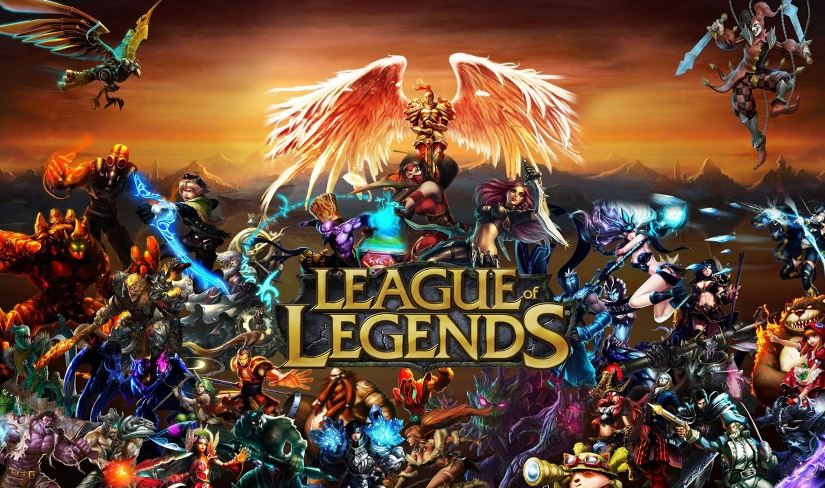
《英雄联盟》(英语:League of Legends,简称LoL)是由Riot Games开发及发行的一款多人在线战术擂台(MOBA)游戏,游戏为免费模式进行并提供付费道具服务。该游戏是受到《魔兽争霸III:冰封王座》中一个名为DotA第三方自定义地图启发而诞生[1],且至今仍不断定期更新。
在《英雄联盟》里,玩家扮演一个不可见的召唤师,并操控具有独特能力的“英雄”与电脑AI或真人玩家控制的英雄对战,游戏通常的胜利目标是要摧毁对方的主要基地“水晶枢纽”,在每场游戏开始时,英雄是较弱的,但会随着游戏进展而升级。这些数值会在下一场游戏重新开始时重置。[2]
《英雄联盟》受到普遍的赞誉,并在一般玩家间享有高人气。至2014年1月为止,超过6700万名玩家每个月至少玩一次《英雄联盟》,而每天都玩的玩家超过2700万,高峰时段有超过750万人同时在在线[3]。2016年9月,该公司估计全世界每个月有超过1亿名的活跃玩家。[4][5]
《英雄联盟》在电子竞技的领域里有着杰出的表现,自2011年起,在北美和欧洲,Riot Games分别在洛杉矶和柏林组织了英雄联盟全球总决赛,来自各地的十数个专业队伍在赛场上一决高下[6],而香港、澳门、台湾、韩国、南美洲等地也举办过区域赛[7]。在2016年的赛季的冠军战中,同时有1470万在线观看的观众,该届的总奖金超过500万美金,冠军奖金为200万美金[8]。
League of Legends (kurz: LoL) ist ein von Riot Games entwickeltes Computerspiel für Windows und macOS. Das Spiel wurde am 27. Oktober 2009 veröffentlicht. Es ist ein Free-to-play-MOBA, welches durch Mikrozahlungen unterstützt wird. Das Spiel wurde 2016 von ca. 100 Millionen Spielern monatlich gespielt.[3]
League of Legends (abbreviated LoL) is a multiplayer online battle arena video game developed and published by Riot Games for Microsoft Windows and macOS. The game follows a freemium model and is supported by microtransactions, and was inspired by the Warcraft III: The Frozen Throne mod, Defense of the Ancients.[1]
In League of Legends, players assume the role of an unseen "summoner" that controls a "champion" with unique abilities and battle against a team of other players or computer-controlled champions. The goal is usually to destroy the opposing team's "nexus", a structure that lies at the heart of a base protected by defensive structures, although other distinct game modes exist as well. Each League of Legends match is discrete, with all champions starting off fairly weak but increasing in strength by accumulating items and experience over the course of the game.[2] The champions and setting blend a variety of elements, including high fantasy, steampunk, and Lovecraftian horror.
League of Legends was generally well received upon its release in 2009, and has since grown in popularity, with an active and expansive fanbase. By July 2012, League of Legends was the most played PC game in North America and Europe in terms of the number of hours played.[3] In January 2014, over 67 million people played League of Legends per month, 27 million per day, and over 7.5 million concurrently during peak hours.[4] League has among the largest footprints of any game in streaming media communities on platforms such as YouTube and Twitch.tv; it routinely ranks first in the most-watched hours.[5][6] In September 2016, the company estimated that there are over 100 million active players each month.[7][8] The game's popularity has led it to expand into merchandise, with toys, accessories, apparel, as well as tie-ins to other media through music videos, web series, documentaries, and books.
League of Legends has an active and widespread competitive scene. In North America and Europe, Riot Games organizes the League Championship Series (LCS), located in Los Angeles and Berlin respectively, which consists of 10 professional teams in each continent.[9] Similar regional competitions exist in China (LPL), South Korea (LCK), Taiwan/Hong Kong/Macau (LMS), and various other regions. These regional competitions culminate with the annual World Championship. The 2017 World Championship had 60 million unique viewers and a total prize pool of over 4 million USD.[10][11] The 2018 Mid-Season Invitational had an overall peak concurrent viewership of 19.8 million, while the finals had an average concurrent viewership of 11 million.[12]
League of Legends (abrégé LoL), anciennement nommé League of Legends: Clash of Fates est un jeu vidéo de type arène de bataille en ligne (MOBA) gratuit développé et édité par Riot Games sur Windows1 et Mac OS X. Fin janvier 2013, un nouveau client bêta pour Mac a été distribué par Riot Games2. Le jeu a été évoqué pour la première fois le 8 octobre 2008 et est entré en phase bêta le 10 avril 20093.
Deux concepteurs du mod très populaire de Warcraft III, Defense of the Ancients: Allstars (plus connu sous son abréviation DotA), Steve « Guinsoo » Feak et Steve « Pendragon » Mescon, ont rejoint Riot Games pour la réalisation de League of Legends, d'où une forte similitude avec DotA. Pendragon, le directeur des relations communautés chez Riot Games, a participé à la création du site Internet de DotA: Allstars ainsi qu'à ses forums.
League of Legends devient rapidement un véritable phénomène. C'est en 2013 qu'il devient l'un des jeux les plus joués au monde4. Il séduit aussi le monde du sport électronique en devenant l'événement eSport le plus regardé de l'histoire, avec plus de 32 millions de spectateurs en ligne et plus de 8,5 millions de vues simultanées lors de la finale de la saison 3 du championnat du monde en 20135. Le record est de nouveau battu en 2015, lors de la saison 5, avec un total de 36 millions de spectateurs et un pic d'audience de 14 millions de spectateurs6 puis en 2016, lors de la saison 6, avec un total de 43 millions de spectateurs et un pic d'audience de 14,7 millions de spectateurs7.
League of Legends (abbreviato con la sigla LoL) è un videogioco online del genere MOBA sviluppato e pubblicato da Riot Games per Microsoft Windows e macOS. Nel novembre 2011 ha più di 70 milioni di registrazioni e 12 milioni di giocatori al giorno, in grado di quintuplicare la base di utenti in 4 mesi.[2]. Nel Gennaio 2014 più di 67 milioni di giocatori giocano ogni mese, 27 milioni di persone giocano ogni giorno, e oltre 7,5 milioni nelle ore di punta[3]. È disponibile in più lingue, come l'inglese (la lingua principale), il tedesco, il russo e anche l'italiano.
Fu inizialmente annunciato il 27 ottobre 2008 e poi pubblicato il 27 ottobre 2009. Il gioco rimase in closed beta dal 10 aprile 2009 fino al 12 ottobre 2009. Successivamente venne messo in open beta, fino al momento della sua uscita.
Steve "Guins00" Freak, il precedente designer della mappa popolare di Warcraft III: The Frozen Throne, Dota Allstars, assieme a Steve "Pendragon" Mescon, l'amministratore dell'ex supporto ufficiale della mappa (www.dota-allstars.com, ora inattivo), fu coinvolto con Riot Games nello sviluppo di League Of Legends. Usando il DotA originale creato da Eul (la mappa originale Defence of The Ancients per Warcraft III: Reign of Chaos) come base, Guins00 creò DotA Allstars inserendo il suo personale mix di contenuti, espandendo largamente il numero di campioni, aggiungendo recipes, numerosi oggetti utilizzabili e vari cambiamenti nel gameplay. Guins00 poi passò alla versione 6S della mappa al suo corrente sviluppatore, Icefrog.[4] Pendragon, il direttore delle relazioni nella community per Riot Games, aiutò nel creare il precedente sito web di DotA Allstars assieme al suo forum.
League of Legends (también conocido por sus siglas LoL) es un videojuego del juego de género Videojuego multijugador de arena de batalla en línea (MOBA) y deporte electrónico el cual fue desarrollado por Riot Games para Microsoft Windows y OS X. En un principio los servidores estaban alojados en la empresa GOA y fue vendida a la empresa china Tencent Holdings Limited.
El juego fue diseñado para el sistema operativo Microsoft Windows y lanzaron una beta para OS X dejando al poco tiempo el proyecto de lado.1 Esta beta ha sido mejorada por parte de usuarios del juego, haciendo posible jugar a una versión actualizada de League of Legends.
En octubre de 2012, contaba con 70 millones de jugadores registrados.2 Para marzo de 2013 se registró 5 millones de jugadores conectados al mismo tiempo en todo el mundo.3 Es un juego de alta competitividad siendo uno de los juegos más populares de los deportes electrónicos (e-sports).4
El juego está inspirado en el popular mapa personalizado del Warcraft III, Defense of the Ancients: Allstars diseñado por Steve «Guinsoo» Feak el cual a su vez está basado en el escenario de StarCraft «Aeon of Strife».5
League of Legends (в переводе с англ. — «Лига легенд»), сокращённо LoL — ролевая видеоигра с элементами стратегии в реальном времени (MOBA), разработанная и выпущенная компанией Riot Games 27 октября 2009 года для платформ Microsoft Windows и Apple Macintosh[1]. Игра распространяется по модели free-to-play. Ежемесячная аудитория игры составляет 100 млн игроков по всему миру (сентябрь 2016)[2].


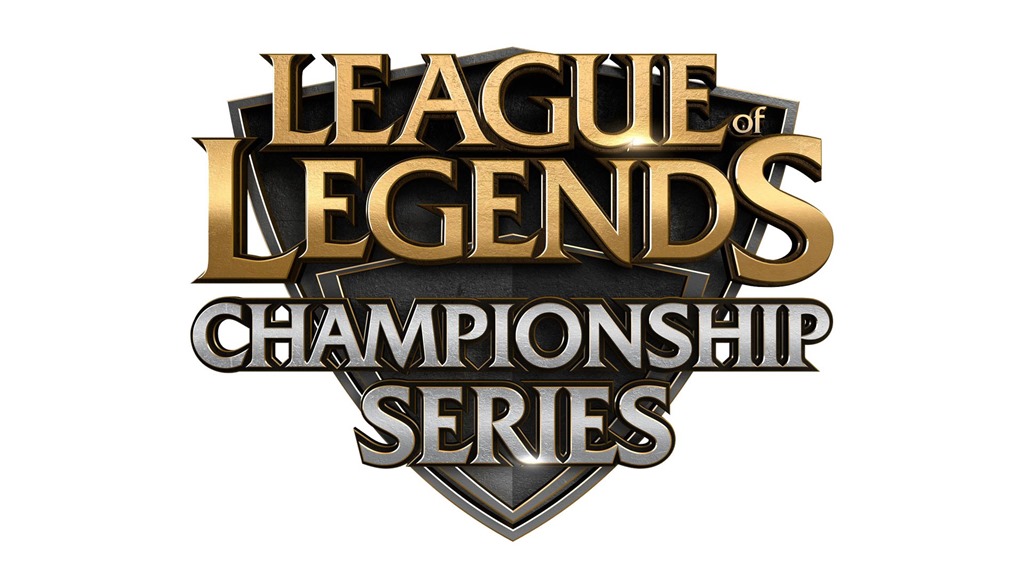

 IT-Times
IT-Times
 Games
Games
 California-CA
California-CA